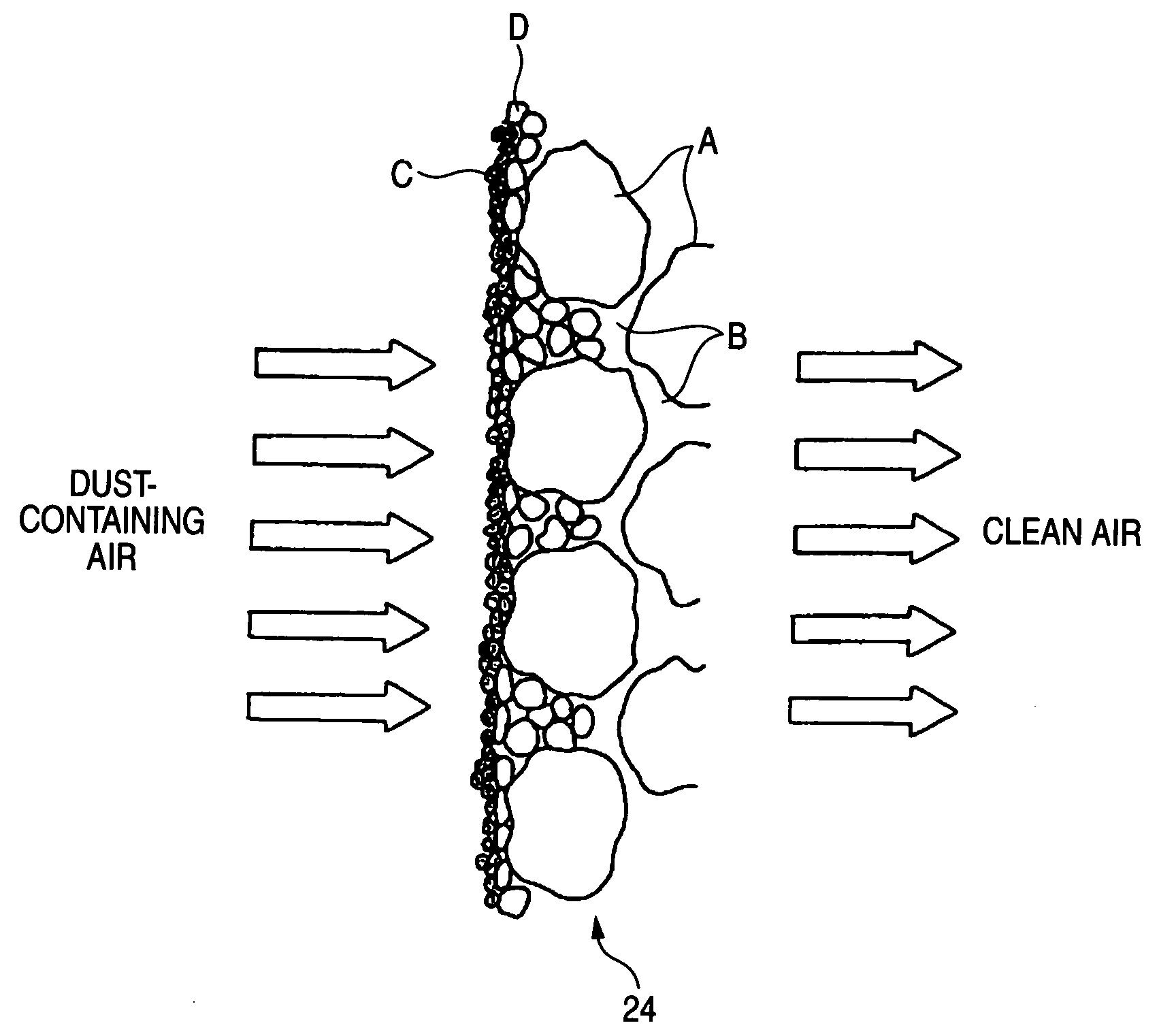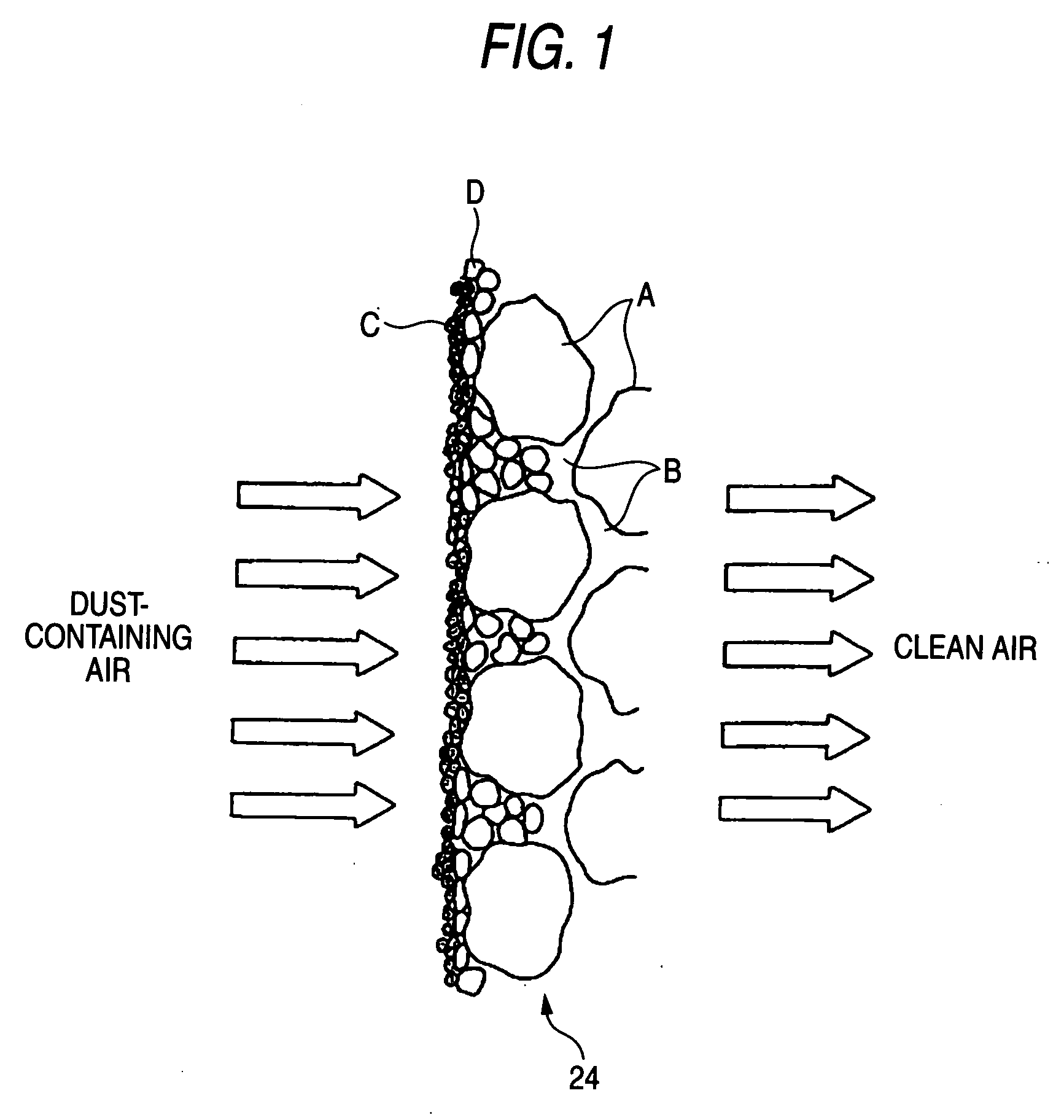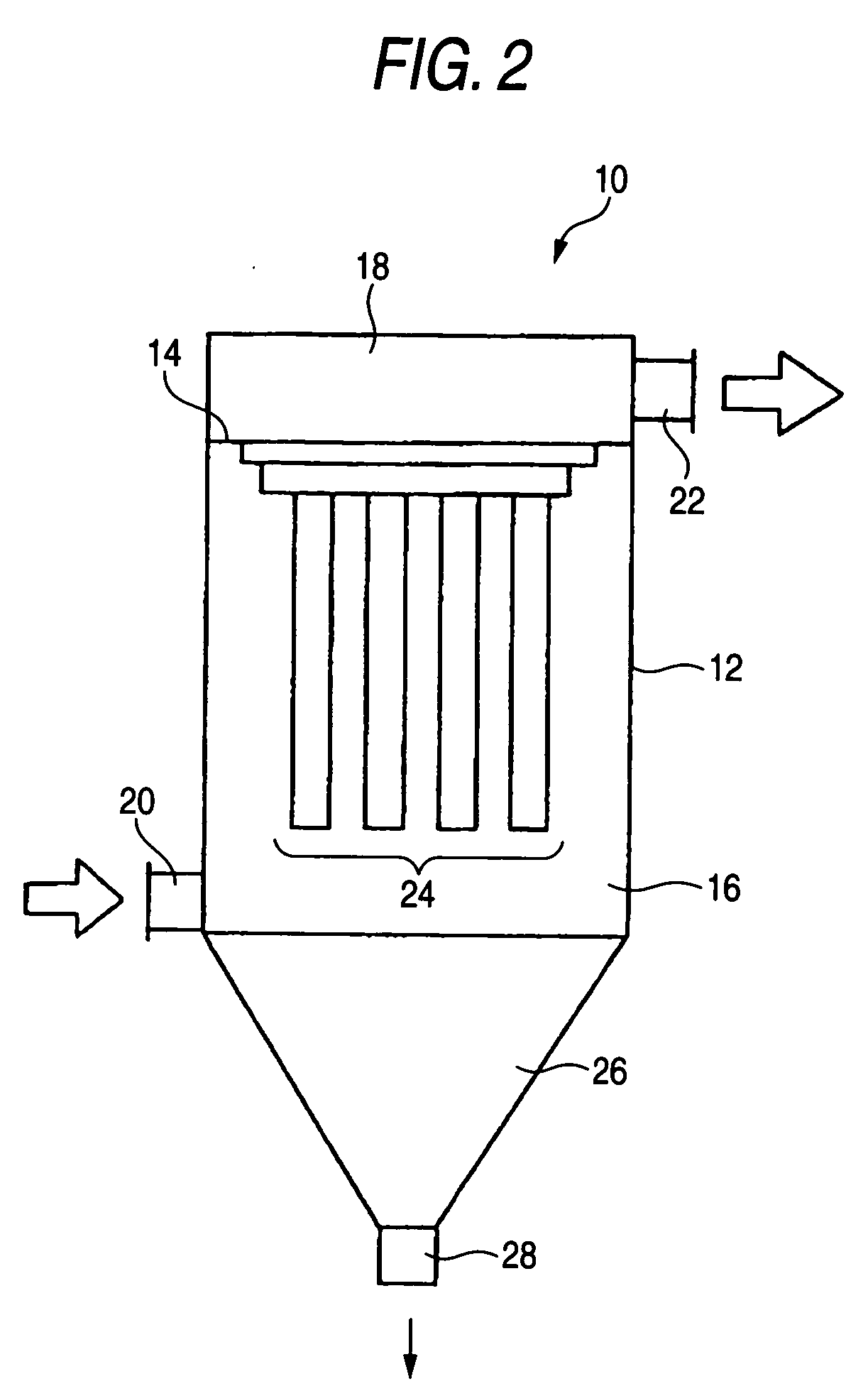Heat-resistant filter element and method for production thereof
a technology of filter elements and heat-resistant filters, which is applied in the direction of filtration separation, synthetic resin layered products, and separation processes, etc., can solve the problems of high equipment cost, increased power of air blower, and damage to filter fabrics, etc., to achieve satisfactory releasability, improve heat resistance, and easy to remove by back washing
- Summary
- Abstract
- Description
- Claims
- Application Information
AI Technical Summary
Benefits of technology
Problems solved by technology
Method used
Image
Examples
example 1
[0087] Fifty parts by weight of PE particles (A) and 50 parts by weight of PP particles (A) were mixed with a solution prepared by dissolving 3 parts by weight of an antioxidant (phenolic antioxidant; high-molecular hindered phenol) in 9 parts by weight of tetrahydrofuran, by means of a Henschel mixer. Thus, a mixture comprising PE particles (A) and the antioxidant dispersed therein was prepared.
[0088] This mixture was introduced into a stainless-steel vessel. In a nitrogen atmosphere, the contents were heated to 120° C. with an oil bath and held at this temperature for 2 hours. Thus, resin composition particles in which the antioxidant had infiltrated into the resin particles were prepared.
[0089] The resin composition particles prepared above were packed into a mold (external dimensions: 20 mm×60 mm, thickness: 3 mm) for test pieces. This mold was held at a temperature of 200° C. for 10 minutes while applying a pressure thereto. Thus, sheet-form solid moldings were obtained. It h...
example 8
[0109] The resin composition particles prepared in Example 1 in which an antioxidant had infiltrated into resin particles were packed into a mold (external dimensions: 1,050 mm×960 mm×60 mm, thickness: 3 mm, sectional shape: corrugated) with vibration. Subsequently, this mold was placed in a heating oven and heat-treated at an oven temperature of 240° C. for 3 hours (180 minutes).
[0110] After termination of the heat treatment, the mold was cooled to 100° C. in the heating oven and then taken out of the oven. While this mold was being cooled with a cooling fan, the resultant permeable porous molding was taken out of the mold.
[0111] Subsequently, a suspension prepared by mixing a polytetrafluoroethylene powder (average particle diameter, 7 μm) with a thermosetting adhesive, methanol, and water was sufficiently homogenized by stirring and applied to a surface of the permeable porous molding by spraying. Thereafter, the coated molding was placed in a dryer and heated at 180° C. for 30...
PUM
| Property | Measurement | Unit |
|---|---|---|
| particle diameter | aaaaa | aaaaa |
| temperature | aaaaa | aaaaa |
| temperature | aaaaa | aaaaa |
Abstract
Description
Claims
Application Information
 Login to View More
Login to View More - R&D
- Intellectual Property
- Life Sciences
- Materials
- Tech Scout
- Unparalleled Data Quality
- Higher Quality Content
- 60% Fewer Hallucinations
Browse by: Latest US Patents, China's latest patents, Technical Efficacy Thesaurus, Application Domain, Technology Topic, Popular Technical Reports.
© 2025 PatSnap. All rights reserved.Legal|Privacy policy|Modern Slavery Act Transparency Statement|Sitemap|About US| Contact US: help@patsnap.com



